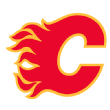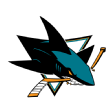Ahead of the free-agency shopping frenzy beginning on July 1, we’re surveying the landscape and outlining the unique situation in which every team finds itself. That includes the key pending unrestricted and restricted free agents and the team’s current cap space, along with the moves I’d make if I were sitting in the GM’s chair. We’ve already looked at the Atlantic, the Metropolitan and the Central, and this edition focuses on the eight teams in the Pacific.
Note: All contract information cited here is courtesy of Cap Friendly, and all underlying numbers are provided by one of Corsica, Natural Stat Trick or Evolving Wild.

Key players hitting UFA: None
Key players hitting RFA: None
Cap space: $10.95 million
The moves I’d make as GM: It’s not quite as bleak after they bought Corey Perry out and announced that Ryan Kesler will be moved to long-term injured reserve, but the Ducks still have a massive imbalance between how much money they have tied up in aging veterans and how good they’ll most likely be next season.
They’re clearly an organization that’s in the process of turning the roster over to the next generation, which will come with inevitable growing pains. The good news is that they seem to be embracing that reality, having hired Dallas Eakins and clearing a couple lineup spots previously devoted to older players whose individual timelines didn’t sync up with the team’s. This can be one of the toughest steps in the rebuilding process for an organization: actually admitting to themselves that it’s time to switch gears, rather than trying to hang on to past glory and make it work again with the same names.
With Eakins having spent time grooming a number of their prospects with the AHL club in San Diego, it’s convenient that they don’t necessarily have to start from scratch. Whether it be Troy Terry, Sam Steel, Max Jones and Isac Lundestrom up front, or Josh Mahura and Jacob Larsson on the blue line, there’s at least some future promise off of which to build. The name to watch is Steel because of how things went for him last season, where he looked like a fish out of water after being forced into the Ducks lineup to start the season out of necessity due to injuries. After going down to the AHL and spending the bulk of the campaign with Eakins, he looked like an entirely differently player upon his return, closing the season out strong with a hat trick and points in six of his final seven games.
Pour one out for goaltender John Gibson, who continues to be wildly underappreciated if this year’s awards voting was any indication. Despite leading the league in goals saved above average, he finished tied for 10th place in Vezina Trophy voting with Frederik Andersen and Jacob Markstrom after receiving just the one measly third place vote. That continues a theme for Gibson, who’s finished tied for seventh place once, and not even on the ballot twice in his four full seasons in the league. That’s unjustified (to put it gently), considering that he’s lapped the competition in both goals saved and save percentage.
Only Ben Bishop has topped him in the latter category, but Bishop has played for significantly better defensive clubs in that time and faced a sizeably easier workload as evidenced by the goals saved metric. The only other goalies that have been north of .920 in that stretch were Antti Raanta and Philipp Grubauer, and they each did so in less than half the number of appearances that Gibson made.
In terms of league-wide recognition and Vezina votes, that probably won’t change any time soon, because this Ducks team likely won’t win nearly enough games to change voters’ minds and remedy that injustice. For the Ducks to just keep their heads above water, he’ll likely need to keep standing on his head like he did in the first couple months of the 2018-19 season, and even that may not be enough. He’s still only 26, but Anaheim needs to make some serious changes defensively if they hope to avoid completely burning him out prematurely. Having a qualified NHL coach behind the bench next season will be a massive step in the right direction.

Key players hitting UFA: W Richard Panik, C/W Mario Kempe, C/W Nick Cousins, W Josh Archibald, G Cal Pickard
Key players hitting RFA: W Lawson Crouse, G Adin Hill
Cap space: $2.87 million
The moves I’d make as GM:
The Coyotes technically have more functional cap room than listed because they can always move Marian Hossa‘s contract to long-term injured reserve, but this isn’t the same franchise that’s perpetually been on the receiving end of money jokes over the years. They’ve sunk a lot of real money — and not just artificially inflated cap dollars that aren’t actually being paid out — into this current team, for which they deserve credit. Reputations like that take a while to shake however, so we’ll see when the rest of the hockey world comes around to that realization.
Last season was a bizarre one in Arizona, and it’s kind of remarkable that they were hanging around in the playoff hunt for as long as they were all things considered. They were absolutely decimated by injuries throughout the lineup, and it sapped them of whatever scoring punch they may have otherwise had. Their team leaders in goals and points were Brad Richardson with 19 and Clayton Keller with 47, respectively. To put that into perspective, the Lightning had six players with as many goals as Richardson and seven players with as many points as Keller.
The two people that deserve the credit for keeping them competitive are: coach Rick Tocchet, who must have tried out a million different line combinations throughout the season, and goaltender Darcy Kuemper, who had the season we’ve all been hoping Antti Raanta would one day have.
I don’t expect them to make a lot of noise in free agency, but if GM John Chayka has taught us anything, it’s that he’s constantly working on something that he believes will make his team better — evidenced by adding veteran forward Carl Soderberg in a deal with the Avalanche this week. No one pulls the trigger on trades more often than he does, so I fully expect the Coyotes to be involved in some business one way or another in the coming weeks.

Key players hitting UFA: W Garnet Hathaway, D Oscar Fantenberg, G Mike Smith
Key players hitting RFA: W Matthew Tkachuk, C/W Sam Bennett, G David Rittich, C/W Andrew Mangiapane
Cap space: $12.96 million
The moves I’d make as GM: After the Flames take care of their restricted free agents, they need turn their attention towards sorting out the goalie situation. The wheels really came off David Rittich’s promising season down the stretch, when he posted an .898 save percentage in 15 games following the All-Star break before ultimately losing the crease to Mike Smith for the playoffs. He’s still only 27 and showed enough before that to warrant getting another look next season, but the Flames are a team positioned to make a serious playoff run so long as the goaltending is on point, so it is problematic to put all of their eggs in that basket.
I’d love to see them take a home run cut with someone like Petr Mrazek or even Semyon Varlamov, but both of those options are realistically out of their price range. A more realistic Plan B is a veteran like Curtis McElhinney or Cam Talbot, both of whom could split starts with Rittich and be managed throughout the campaign in order to preserve them for a potential postseason sprint.
The key for Calgary this summer is to avoid overreacting to the most recent five games they played (a quick ouster from the playoffs), because as ugly as they may have been, the 82 that came before them were pretty special. Only the Tampa Bay Lightning had a more potent offense, and the Flames were a top five shot share team all season that jumped all the way up to first in the final 25 games. There’s a reason why they were the top seed in the West, and considering the talent, they should once again be a handful for opponents.
The good news is that they don’t seem like the type of team to panic and completely shift their identity towards size and toughness following a postseason defeat. Especially after the manner in which they lost, which was by having laps skated around them by a younger, faster buzzsaw Avalanche team that was playing its best hockey at the perfect time. If anything, what the Flames can take from that is they themselves should start trusting and playing some of their young guys even more as the league shifts towards that style of play.
With Rasmus Andersson, Jusso Valimaki and Oliver Kylington all knocking on the door, this could be a good time for them to explore selling high on T.J. Brodie while they still can. He’s technically not a right-handed shooting defenseman, but he plays on that side, paired with Mark Giordano. His numbers from last season look good, but they were propped up by having gotten to play with the runaway Norris Trophy winner for north of 1,000 of his 1,400 five-on-five minutes last season. He’s an unrestricted free agent next summer that’ll be turning 30, which is the type of player the Flames will presumably shy away from committing to long-term anyway. All of which makes this the perfect time to test the waters, and see if they can fetch a legitimate scoring threat for him from a team that has far less defensive depth than they do.

Key players hitting UFA: W Alex Chiasson, W Tobias Rieder, W Ty Rattie, D Alex Petrovic, G Anthony Stolarz
Key players hitting RFA: W Jesse Puljujarvi, C/W Jujhar Khaira
Cap space: $8.33 million
The moves I’d make as GM: It’s times like these when the hockey world really misses former Oilers GM Peter Chiarelli the most, because he’d surely do something ridiculous to break the ice and give us all a good laugh. Listening to new Oilers GM Ken Holland speak lately, it doesn’t sound like the Oilers will be doing anything that crazy under the early stages of his watch, as he immerses himself in the organization and familiarizes himself with what he’s got in the organization.
The question is how patient the Oilers can really afford to be, if it means wasting another prime Connor McDavid season with what’s an embarrassingly thin supporting cast around him. Last season, McDavid either scored or directly set up 42.4% of the total goals Edmonton had, which tied Alex Ovechkin‘s 2007-08 season for the biggest individual offensive burden a single player has carried in the analytics era (since 2007). With McDavid on the ice at five-on-five, the Oilers outscored opponents 77-75; with him on the bench, they were absolutely walloped by a 104-68 margin.
All analysis of the Oilers and what they need to do this summer begins and ends with not necessarily even finding McDavid help, as much as making sure that they’re able to function as a professional hockey team on the increasingly rare moments that he needs to recharge his batteries.
The biggest unanswered question that remains is whether it makes sense to play McDavid and Leon Draisaitl together as much as they have continued to do, despite the fact that they’re mesmerizingly fun to watch when they share the ice. Draisaitl is a tremendous player in his own right, coming off a 50-goal and 105-point season. But paying anyone $8.5 million per season to ride shotgun with the best player in the world doesn’t make a whole lot of sense, especially when McDavid has shown that he’ll make anyone he plays with look like the absolute best version of themselves, as evidenced by the 22-goal season Alex Chiasson just had. At some point there’s an opportunity cost, and for the Oilers, life would become significantly easier if they could count on Draisaitl to consistently carry his own scoring line, giving them a legitimate 1-2 punch down the middle.
There are three things the Oilers should be able to address on the fly this summer for a relatively small price. First, they’ll need to add some more real talent on the wing, of which there’s plenty in this free-agent class. Brett Connolly has been linked to them, and he certainly checks out as an option. The addition of Joakim Nygard earlier in the offseason was a smart under-the-radar move, and he should help. He was second in the Swedish Hockey League in goals last season, but even if that type of scoring punch doesn’t translate to this level, his speed should add a useful dynamic to the group. For most of the players that find themselves outside the top tier of free agents, getting to potentially play with McDavid and Draisaitl, score a ton of goals, and eventually get paid by someone else down the road because of it seems like an intriguing short-term option. Edmonton should be using that as their main selling point during the free agent meeting process.
The second move requires finding a goalie that can help share the crease with Mikko Koskinen, who completely burned out down the stretch last season after being forced to start an obscene number of consecutive games. I’d prefer for them to be ambitious with the goalie they choose to do that, but it’s hard to invest too much money in another goalie after Chiarelli’s last act (giving Koskinen $4.5 million per season). Petr Mrazek would be intriguing, whereas Mike Smith would be significantly less so.
The third move is the toughest of the bunch, and it involves shedding Milan Lucic‘s contract. His $6 million cap hold right now is an absolute killer for the Oilers, considering how little money they have to work with, and the fact that he’s proven beyond a shadow of a doubt that he’s completely unplayable at this point of his career. But after they pay out his signing bonus in July, he’s “only” owed $13 million total over the final four years of the deal. Considering how much the Senators are going to struggle just to get to the cap floor this season, I imagine they’d be interested in taking the deal off their hands with the right sweeteners involved. Turning around and using that newfound cap space on an actual winger or two that can score some goals and has real top-nine utility would go a long way towards solving a lot of what’s ailed the Oilers in the recent past.

Key players hitting UFA: W Brendan Leipsic
Key players hitting RFA: C/W Alex Iafallo, C/W Adrian Kempe, G Cal Petersen
Cap space: $13.29 million
The moves I’d make as GM: Unless something changes between now and then, the Kings are currently slated to have $53 million in cap space for the 2020-21 season tied up in: 38-year-old Ilya Kovalchuk, 36-year-old Jeff Carter, 36-year-old Dustin Brown, 36-year-old-Dion Phaneuf (bought out this offseason), 36-year-old Mike Richards (bought out in 2015), 35-year-old Jonathan Quick, 33-year-old Anze Kopitar, 33-year-old Alec Martinez and 31-year-old Drew Doughty.
Oof. The Brown and Carter contracts run for another year after that, but they’re not really making any real dollars at that point, so they can easily be passed along to someone else. Quick has another year after that, but it’s the same sort of deal. The issue is that Doughty and especially Kopitar will be getting awfully long in the tooth at that point, and making an obscene amount of money. Suffice it to say that the Kings will be paying for their Stanley Cup championships for a long time to come, but considering they won twice, it’s probably worth it.
Those kinds of financial commitments make it almost impossible for them to do anything of significance at the moment. They essentially need to strap in, weather the storm, and think about what they’re going to do once all of that money is off the books and they have a fighting chance four or five years from now.
The silverest of silver linings is that there’s a lot to like about how they’ve worked the draft over the past couple of years. They’ve made a concerted effort to add as many highly skilled forward prospects as possible to their pipeline, and it bodes well for the next generation of Los Angeles Kings hockey. They were arguably the big winners of the 2019 draft, having Alex Turcotte and Arthur Kaliyev slide to them, before taking Samuel Fagemo later on.
Add those players to Carl Grundstrom, Rasmus Kupari, Akil Thomas, Jaret Anderson-Dolan and Bulat Shafigulin, and there’s something legitimately interesting forming below the surface. The reality is that it’ll likely take most of those players a couple of years to get to the NHL and be ready to play real minutes anyway, so the Kings at least have a rough timeline to work around now.

Key players hitting UFA: C Joe Pavelski, C Joe Thornton, W Gustav Nyquist, W Joonas Donskoi, D Joakim Ryan
Key players hitting RFA: W Timo Meier, W Kevin Labanc, C Antti Suomela, C Dylan Gambrell
Cap space: $14.84 million
The moves I’d make as GM: It’s easier said than done, but the biggest thing the Sharks need to do this summer is to make decisions with their head rather than their heart. If there’s one GM that we can bank on to ruthlessly handle that assignment for the betterment of his team, it’s Doug Wilson, who has asserted himself as cold-blooded over the years. When a 37-year-old Patrick Marleau came up for a new contract in the summer of 2017, Wilson let him leave for Toronto after not being willing to give him the third year the Leafs were. It was a tough move after Marleau had spent 19 seasons with the organization, but it proved to be the right one.
They face a similar predicament now with Joe Pavelski, who is a free agent after having spent the first 13 years of his career in San Jose. His value to the organization undoubtedly extends beyond on-ice results, with him not only serving as the team’s captain but their emotional heartbeat last postseason after coming back from two gruesome head injuries. He can still clearly play as well, having bounced back to 38 goals last season after a down year by his lofty standards. Just how much he has left in the tank is a fair question nonetheless, seeing as he’s set to turn 35 this summer. While the goal totals are nice, what’s troubling is that his underlying shot generation metrics have been steadily dipping, which typically serves as a check engine light for aging forwards. It didn’t ultimately matter because it was buoyed last season by a sky-high 20.2% shooting percentage. Even though he does most of his damage around the net and on the power play, that’s clearly not a sustainable figure, and if it dries up the production will as well.
However, the ultimate deal breaker for the Sharks may not even be the potential term he could be asking for (and receive from another team), as much as the actual dollars themselves. After re-signing Erik Karlsson and committing an unheard of $26.5 million in cap space to just three defenders (adding Brent Burns and Marc-Edouard Vlasic to the equation), they need to carefully prioritize and ration their remaining resources.
The No. 1 priority is keeping Timo Meier, who has become a trendy name to bring up in the annual offer sheet roulette game. I don’t see him as a realistic candidate there, because unless the offer sheet is in the highest tier — which is north of $10.5 million per year and nets four first-round picks heading back to San Jose from the signing team — the Sharks have to match no matter what, and then deal with the fallout accordingly. Meier’s overall counting numbers don’t necessarily look incredible because he didn’t make it onto the Sharks’ lethal top power play and played under 17 minutes per game, but he was an absolute star last season. At five-on-five, he was: tied for 17th in goals with Steven Stamkos, Matt Duchene and Mark Stone; tied for 20th in points with Nathan MacKinnon, Auston Matthews and Jack Eichel; and 9th in shots, just ahead of Alex Ovechkin and John Tavares. At the bare minimum, he’s already established a floor of being a dominant even-strength force, and who knows what his ceiling could be considering he doesn’t turn 23 until the first week of the 2019-20 season. There’s no way the Sharks are letting that kind of player walk away, even if it means opening themselves up to a double-offer sheet scenario where Kevin Labanc gets pried away, or having to dump Brenden Dillon for pure cap relief.
Between Karlsson, Burns, Logan Couture, Evander Kane and Vlasic, the Sharks currently have a tremendous amount of money committed to a small handful of players that either are already in their 30s or getting there soon. They’ll continue to pay those guys big money well into their mid 30s, at which point their price tags will heavily outweigh actual production. If you want to see what that looks like, you can stay in state and look at the Kings. Doug Wilson knows that, but he also doesn’t care. They’ve been so close to winning a Cup for so long, that they owe it to themselves to try and finally get over the hump and win it all. If they do, then it’ll make the future contract pains easier to swallow. And if they don’t, then it’s likely someone else’s problem anyways because he’ll be long gone.
The big sprint to the finish line resumes next season for the Sharks, when they’ll likely roll out the majority of a team that very well could’ve represented the West in the Stanley Cup Final if they hadn’t disintegrated into dust along the way this spring.

Key players hitting UFA: C/W Markus Granlund, D Ben Hutton, D Derrick Pouliot, D Luke Schenn
Key players hitting RFA: W Brock Boeser, W Nikolay Goldobin, W Josh Leivo, C/W Tyler Motte
Cap space: $15.53 million
The moves I’d make as GM: The Canucks are playing a dangerous game right now. They enter this offseason with a lame duck GM, with Jim Benning in the final year of his deal. Considering that the Canucks have missed the playoffs in each of the past four years now, it seems fair to suggest that he’s working to save his job at the moment, needing to have some tangible sort of improvement to show ownership heading into next season. That’s a scary idea to think about, because his personal interests may not necessarily line up with the best interests of the organization moving forward.
We’ve already seen some inklings of that already, beginning with the J.T. Miller trade. There’s no question that Miller represents a massive upgrade to the team’s lineup next season, immediately becoming their second best winger behind Brock Boeser. The issue is that they paid a premium future first-round pick for it; it’s lottery-protected in 2020, but is not in 2021, and that could really come back to haunt them. The elephant in the room is that the Lightning had to move Miller’s contract this summer and everyone knew it, meaning that the Canucks overpaid for a player that they almost surely could’ve gotten at a better value. That’s ultimately the theme of the Jim Benning regime in Vancouver, which is one that’s been all about reasonable player evaluations in a vacuum that have unfortunately been overshadowed by poor business sense.
Benning’s track record in unrestricted free agency has been an absolute mess. Over the past three years, the Canucks have been incredibly active in July, yet they don’t actually have anything of real substance to show for much of it. In the summer of 2016, they signed Loui Eriksson to a six-year, $36 million deal as he turned 31. The 32 goals he’s scored in his three years in a Canucks uniform have barely exceeded the 30 he scored in his final season for the Bruins. In the summer of 2017, they spent a combined $22 million on Sam Gagner, Michael Del Zotto, Anders Nilsson, Alex Burmistrov and Patrick Wiercioch, none of whom are on the team anymore. Last summer, Benning used $27.8 million on Jay Beagle, Antoine Roussel and Tim Schaller, which is a sentence that doesn’t to be further elaborated. This summer, they’ve already been cited as the front runner for Tyler Myers, reportedly preparing an offer that would pay a solid, third-pairing defenseman the going rate of an undisputed No. 1 defenseman. The idea of giving a player of Myers’ caliber anything approaching $50 million is a hysterically implausible idea on its face, yet it almost has to be taken as a perfectly plausible reality the more you think about it, given Benning’s track record.
It’s great that they’ve secured tremendous talents like Elias Pettersson and Quinn Hughes in the draft, and identified the core members that they’ll be building around for years to come. But due to all of those other decisions, the Canucks aren’t positioned to take advantage of their two remaining entry-level seasons, given how weak the rest of the roster around them is at the moment.
If everything goes according to schedule, they’ll use the next couple of seasons to build up that supporting cast and prepare themselves for a legitimately sustainable run as Pettersson and Hughes enter their prime seasons. But at that point, they’ll be making significantly more money, which means that the Canucks will have to be smarter about how they’re allocating the remainder of their resources and filling out the lineup. The good news is that most of the ill-advised contracts with which they’ve saddled themselves up until this point will be off the books by the summer of 2022, with Roberto Luongo‘s recapture penalty, Loui Eriksson’s $6 million, Antoine Roussel and Jay Beagle’s combined $6 million, and Brandon Sutter‘s $4.375 million all having expired. There’s only really the one season of overlap between Pettersson and Hughes’ seconds deals and some of those contracts, at which point they’ll presumably be able to get creative and move things around if need be.
That’s why it’s imperative that the Canucks don’t get ahead of themselves by tying up bad future money this summer, because they’ll need to maintain that kind of financial flexibility to really spend and continue to add complementary talent down the road. Every single move they make this offseason should be governed by that one specific mandate. Which is exactly why the thought of entrusting someone who just mortgaged a future first-round pick with that responsibility is incredibly alarming — given that desperation may lead him to make even more ill-advised short-term moves.

Key players hitting UFA: D Deryk Engelland, W Brandon Pirri, W Tomas Nosek, C/W Pierre-Edouard Bellemare
Key players hitting RFA: W Nikita Gusev, G Malcolm Subban, D Jimmy Schuldt
Cap space: $0
The moves I’d make as GM: It took only two years for the Golden Knights take the clean slate they were given and turn it into a salary cap crisis, finally completing the last step towards becoming a true NHL franchise. In their defense, they’ve used that money to construct an incredibly solid team that should continue to be a viable contender for the foreseeable future.
They’re up against it financially right now, but it’s because they’ve aggressively spent on a number of good players in an attempt to consolidate their early success and keep the good times going in Vegas. There have been a couple of swings and misses, with the Tomas Tatar trade deadline acquisition being the most notable one, but it hasn’t been for a lack of effort, and there’s something especially commendable about that approach they’ve taken.
In getting good in such short order, they’ve also made plenty of other GMs out there squirm, proving that there are indeed many different ways to go out and creatively improve your team. In a league where we constantly hear inactivity justified with assertions that it’s impossible to land certain types of players unless you patiently draft and develop them (which conveniently behooves the GMs preaching that, because it buys them a longer leash and more job security), George McPhee and Kelly McCrimmon have shown otherwise.
There are obviously extenuating factors in play with regards to the expansion process and the market itself, but they’ve still built up an imposing top-six forward group entirely from scratch through trade (Mark Stone and Max Pacioretty), free agency (Paul Stastny), and weaponizing cap space to add extra assets (being given Jonathan Marchessault for taking Reilly Smith‘s contract off of the Panthers).
We recently saw Erik Haula become a cap casualty after he was traded to the Hurricanes for a prospect, and there’s likely still another similar move or two of that ilk to come. The name that keeps coming up is defenseman Colin Miller, who mysteriously fell out of favor with the Golden Knights coaching staff last season. While clearing the $3.875 million figure that comes with him would be undeniably helpful for Vegas right now, it’s a situation in which pretty much every other team out there should be trying to cast themselves into the Team B role. It’s a perfectly reasonable price tag taking him up until his age-30 season, and at the very worst he’s a defenseman that can make the absolute most of selective deployment. He’s a good skater, tremendous puck handler, plays the right side, and always improves his team’s results when he’s on the ice. He’s also a player that has, for whatever reason, been historically undervalued by NHL evaluators, which means that he could surely be had for a bargain price. When looking at the list of defensemen available on the open market this summer and factoring in their next contracts, trading whatever it’ll take for him seems like a far more appetizing option.
The Knights are loaded up front, but I’d love to see them move some stuff around to make it work with Nikita Gusev. It’s always tough to translate production from one league to another and it’s understandable that Vegas would be hesitant to fully invest in him after the Vadim Shipachyov debacle, but this is an entirely different situation. Gusev turns 27 this summer so he’s still in his prime, his skills have shown to be quite projectable to this level in recent international tournaments, and his KHL production was beyond dominant. Last season, he had 82 points in 62 games, outscoring his team’s second leading scorer Alexander Barabanov by 36 and Pavel Datsyuk by 40. He also sacrificed financially to come overseas and play in the NHL, in case there’s any doubt about his dedication or interest in being here. Put all of that together, and it’s a gamble that’s worth taking purely based on the unbelievable upside.